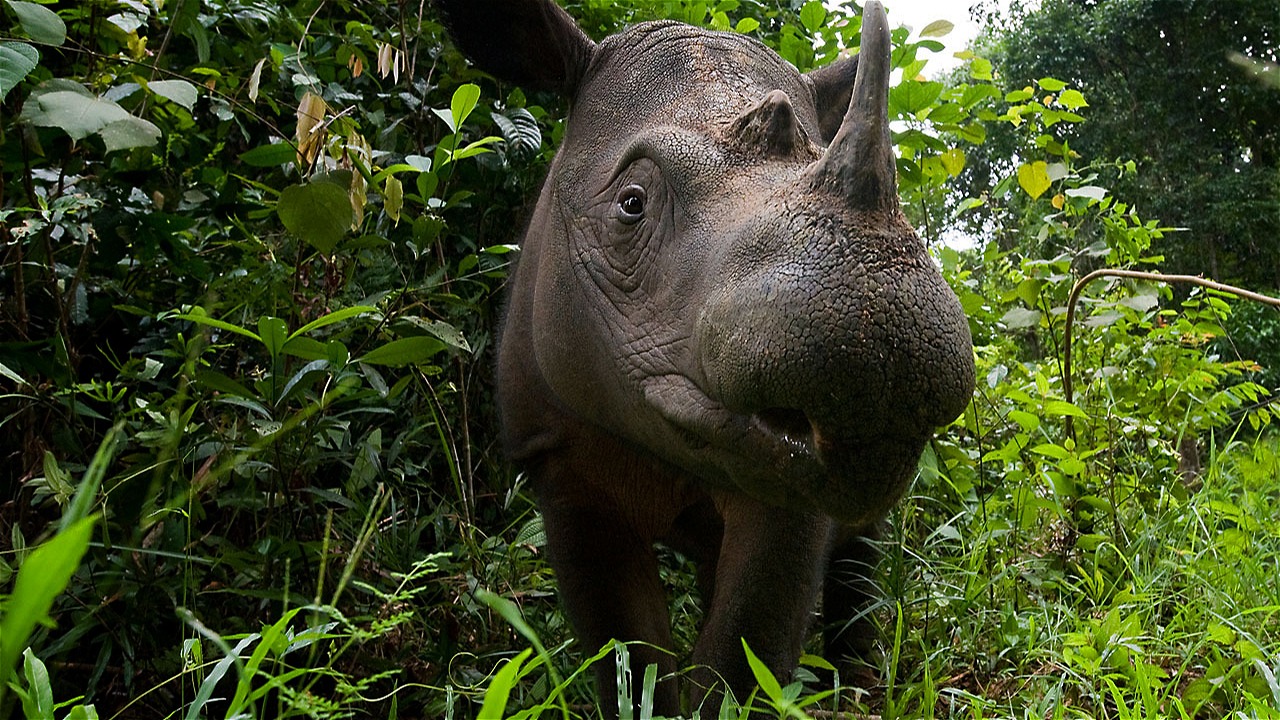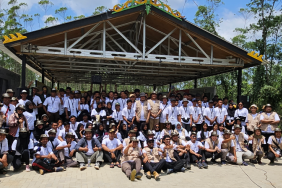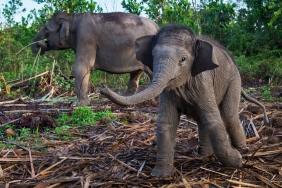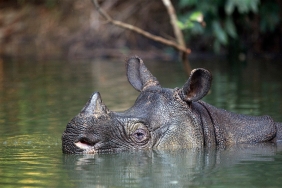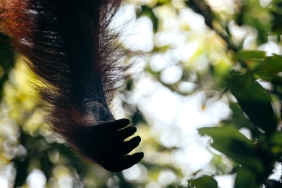INDONESIA'S RHINOS ARE CRITICAL, NEW CONSERVATION APPROACH NEEDED
JAKARTA- The condition of the Sumatran rhino (Dicerorinus sumatranus) is not as good as its Javanese sibling. The Javan rhino (Rhinoceros sondaicus) has fared better, although it is currently facing problems with limited habitat area that can accommodate its population growth. Another problem is the rapid growth of Langkap (Arenga obsitulia), which is holding back the Javan Rhinos' food growth in their only habitat in Ujung Kulon. Based on the latest data released by the Ministry of Environment and Forestry (KLHK), the number of Javan Rhinos in their last habitat in the Ujung Kulon National Park (TNUK) area is 63 individuals. Meanwhile, Sumatran rhinos are estimated to have less than 100 individuals left based on the conclusion of experts in the PHVA (Population and Habitat Viability Assessment) meeting in 2015.
"To save the critically endangered Sumatran Rhino, a species-based conservation approach is needed, similar to that of the Javan Rhino," said Yuyun Kurniawan, Program Coordinator of WWF-Indonesia's Ujung Kulon Project. Yuyun continued, "Although the estimated population size of the Sumatran Rhino is relatively larger than the Javanese Rhino population, but its existence is scattered in small sub-populations. Thus, the opportunity for population growth of Sumatran Rhinos is relatively lower than that of Javan Rhinos. If no proactive efforts are made to consolidate these small sub-populations, the threat of local extinction of the Sumatran Rhino is very likely to occur, "
The Javan Rhino population in 1970 was only 47 individuals based on WWF data, then rose to 51 individuals in 1981. In 2014, the number was known to be 57 individuals, and this year a total of 63 individuals. This increase in the number of individuals proves that species-based conservation efforts need to be carried out also to increase the Sumatran Rhino population.
Arnold Sitompul, Conservation Director of WWF Indonesia, "Sumatran Rhino conservation efforts in Indonesia must be carried out by promoting new innovations, namely encouraging more active semi-natural breeding programs. The condition of the population in nature is very critical, therefore, habitat protection alone is not enough to save the Sumatran Rhino". Arnold continued, "Meanwhile, for Javan Rhinos, habitat management must be carried out more aggressively, through steps to control langkap, which is an invasive species and has greatly disturbed the rhino's original habitat."
The Government of Indonesia has set a population growth target of 10% for 25 protected species between 2015 and 2019, including the Sumatran and Javan Rhinos. For the Javan Rhino, this target has almost been met, unfortunately not for the Sumatran Rhino, whose population in 1974, was estimated between 400-700 individuals but in the last 10 years the rate of population loss has reached 50 percent. Even in one of its population pockets in Kerinci Seblat, the Sumatran Rhino has not been found since 2008.
In order to commemorate World Rhino Day, which falls on September 22, WWF Indonesia held a series of events, such as in Ujung Kulon and in Aceh. In Aceh, it will hold a Global March for Rhino, around the Baitul Rahman Mosque, Banda Aceh.
While in Ujung Kulon, WWF will participate in a series of events organized by the TNUK Hall, with the theme "Together We Can, Save the Javan Rhino" centered in Taman Jaya Village, Sumur District, Pandeglang. The event will be attended by the Regent of Pandeglang, and will also see the signing of the "Celebrating Biodiversity" declaration. The event is a form of education about rhino conservation in schools around Ujung Kulon National Park, Pandeglang City and Cikepuh Wildlife Sanctuary, Sukabumi, which is carried out in collaboration with Ujung Kulon National Park Hall, Pandeglang Regional Government, Indonesian Rhino Foundation, Yukindo, Sustainable Nature Student Association (HIMALA) Mathla'ul Anwar University, ALABAMA, AKSI, Pagar Kulon.
Editor's Notes:
- The low population of Javan Rhinos is caused by several things such as low reproductive rates, decreased genetic quality, disease threats, threats to food availability, competition for food space with other animals (banteng), potential natural disasters, and poaching.
- Currently the Javan Rhino population is 63 individuals with 36 males and 27 females, and is only located in the Ujung Kulon National Park area.
- On September 22, 2010 WWF initiated World Rhino Day. Indonesia responded positively to the signal, especially when World Rhino Day was celebrated in South Africa. Finally, President Susilo Bambang Yudhoyono in 2012 launched the commemoration of the International Rhino Year in Indonesia
- Javanese and Sumatran rhinos are large mammals whose existence is threatened. They are listed by the International Union for the Conservation of Nature and Natural Resources (IUCN) as critically endangered (critically endangered)
- Species-based conservation is a conservation activity that is carried out based on the consideration of certain species in the ecosystem. This activity is more focused on saving certain animals whose status is already critical or locally extinct.
.
.
For more information, please contact:
Yuyun Kurniawan, Project Leader Ujung Kulon - National Rhino Conservation Coordinator, WF-Indonesia
Email: [email protected], Hp: 0811-122-0066
Diah R. Sulistiowati,Forests and Species Campaign Coordinator, WWF-Indonesia
Email: [email protected], Hp: 0811-100-4397

